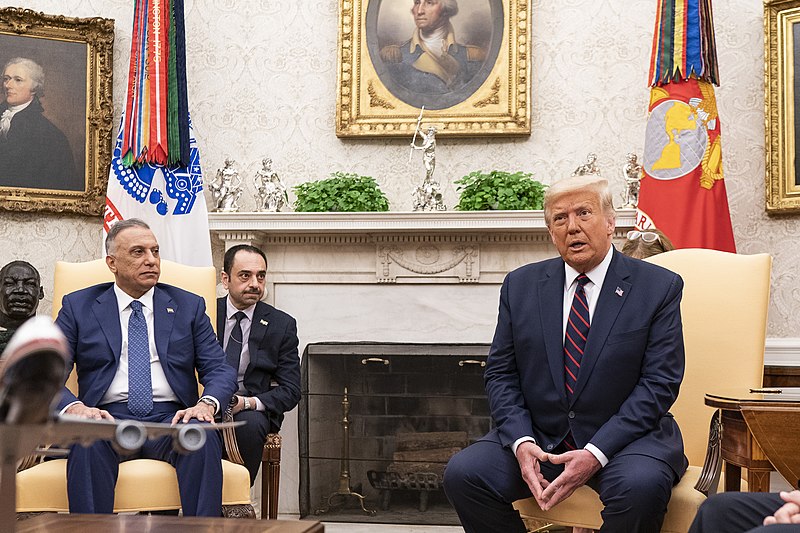Despite the selection of a new prime minister, protests continue
Iran has steadily increased its influence in Iraq since the 2003 invasion by U.S. and coalition forces, which toppled Saddam Hussein’s long dictatorship. As the standard bearer of Shiite Islam, Iran’s impact is deepest among Shiite Iraqis, who form the majority of Iraq’s population. The South of Iraq forms the Shiite heartland, and the heart of the South is Basra, a metropolis of millions located on the Shatt al-Arab (the confluence of the Tigris and Euphrates near the Persian Gulf). Vast oil reserves lie nearby. Rival ethno-sectarian power centers are the Sunni central zones and Kurdish Northern mountains.
During the U.S. occupation of Iraq (2003-2011), Iranian sponsored Shiite insurgent forces and militias fought coalition forces, the Iraqi government, and Sunni militias and civilians in a bloody and multi-sided civil war. When the Islamic State (ISIS) invaded Iraq and conquered significant portions of the North and West (2014) of the country, Iraq’s military and police crumbled. A force that helped turn the tide against ISIS was the al-Hashd al-Shaabi, or Popular Mobilization Forces (“PMF”), an array of Shiite militias. Mansour and Jabar write that the PMF are generally Shiite controlled, and while not monolithically loyal to one faction or another, significant Iranian influence is exercised over the PMF. The PMF numbers over 60,000 fighters and different factions swear fealty to either Ayatollah Ali Khamenei (the Shiite supreme leader of Iran), Grand Ayatollah Ali al-Sistani (Iraq’s revered Shiite leader), or Muqtada al-Sadr (a populist Shiite cleric whose forces opposed the U.S. occupation).
Recent protests in Southern Iraq have targeted national government (the Government of Iraq, or “GOI”) and PMF related sites. These protests continue a trend of civil unrest in the country extending back years. Two main protest themes have emerged: anger at the failures of the GOI, and opposition to the oversized influence of militias or non-GOI actors in the political process. The latter complaint includes indignation over the dominating influence of Iran in Shiite, and hence, Iraqi, politics. Like the Shatt al-Arab merges the Tigris and Euphrates, both protest streams can be viewed as intertwined symptoms of a desire for effective civil governance, which has proved elusive for generations. This view may of course oversimplify the motivations of individual protesters.
The current round of protests ignited in October 2019, after former Prime Minister Adel Abdul Mahdi demoted revered Iraqi Counter-Terrorism Service (“ICTS”) commander Lieutenant General Abdul-Wahab al-Saadi to a Ministry of Defense Post. Al-Saadi was famous in Iraq for leadership in the fight to liberate central and Northern cities from ISIS (2014-2017). The ICTS is the most efficient Iraqi army formation, formed after the 2003 U.S. occupation with intense training from coalition forces. The unit suffered heavily in the fight against ISIS. It is believed that al-Saadi’s relationship with the U.S. induced Iranian actors to pressure GOI actors for al-Saadi’s demotion.
Weeks of protests destroyed the legitimacy of Prime Minister Abdul Mahdi’s government. Abdul Mahdi resigned on November 29th, 2019. After two candidates failed to form a government, Mustafa al-Kadhimi, a chronicler of Saddam Hussein’s crimes and later GOI intelligence chief, was nominated in April and finally confirmed on May 7, 2020. Wasting no time, al-Kadhimi restored General al-Saadi to active command of the ICTS and ordered security forces to release civilians arrested in the protests.

Al-Kadhimi’s ascent to the premiership did not stop the protests, however. The GOI estimates that 560 people were killed during protests stretching from October 1, 2019 to July 30, 2020. The government is now offering compensation to the families of the “martyrs” who were killed. The protests this summer have been most active in the Basra area, targeting GOI facilities or PMF buildings. Some activists have been targeted for assassination. Due to the killings, protesters have demanded the resignation of the regional governor of Basra, while al-Kadhimi has traveled to Basra to insist that his new government will establish security and punish extrajudicial killings. After police fired live rounds at protesters in Basra, the prime minister fired the police chief. With so many disparate levers of power and no state monopoly on violence because of the prominence of the PMF, Pregent writes that al-Kadhimi must wrest control of the country from Iranian backed militias or the prime minister will be unable to move the needle on the protesters’ complaints: jobs, reliable utilities, free and fair government, and Iranian influence.
Terrorist groups use ineffectively governed areas to harvest support, or they target the same areas for takeover, as ISIS did in Syria and Iraq. Countries with ineffective governance, such as Syria, Libya, and Iraq, are ripe for foreign influence and coercion. Until political decisions in Baghdad are made by Iraqi parliamentarians, instead of armed groups beholden to sectarian or Iranian interests, the GOI will find it difficult to satisfy the protesters.
By Chris Crawford
